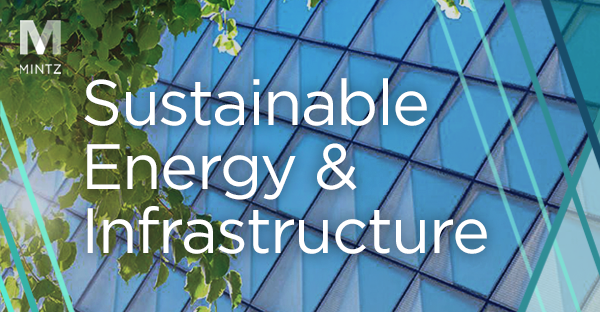ML Strategies Energy & Sustainability Washington Update — April 2022
President Biden’s FY23 Budget
The White House released President Biden’s budget request for Fiscal Year 2023 in late March, including a total request for $48.2 billion for the Department of Energy — representing a $6.3 billion or 15.1 percent increase from the 2021 enacted level.
The budget request can be found by clicking HERE, and a statement from Energy Secretary Granholm can be found HERE.
The House and Senate appropriations committees will soon begin consideration of the president’s request. With Democrats controlling both the House and Senate, the spending bills produced by the committees will in many ways support the president’s budget, but lawmakers in both chambers will be seeking to ensure their priorities are also represented. Fiscal Year 2023 begins on October 1, so the budget process officially must be finalized by that date; however, for many years, that deadline has slipped with the government being funded via a Continuing Resolution as the final bill is negotiated.
Senate Climate Change Task Force Proposal for Energy Independence
The Senate Climate Change Task Force met on March 29 to discuss the importance of the United States becoming energy independent through a clean energy transition. At the meeting, the task force presented a three-step, 500-day plan to end U.S. reliance on Russian energy while putting the nation on a 10-year path to transition to clean energy. The Task Force proposal would:
- Ban all oil imports from Russia (last month President Biden banned Russian energy imports)
- Protect consumers and transition to a clean energy future by enacting the SAVE Consumers Act, which would release an equivalent to 500 days of Russian oil imports from the Strategic Petroleum Reserve, and invoking the Defense Production Act to support the production of clean energy and energy-efficient electric technologies. Read more on the SAVE Consumers Act HERE.
- Pass clean energy, energy efficiency, and climate measures, such as a new Climate Conservation Corps; tax credits and rebates for renewable energy, electric vehicles, heating and cooling devices, and domestic clean energy manufacturing; national climate bank funding to provide communities with access to capital to fund projects to cut dangerous emissions; and environmental justice investments to bring clean air, clean water, and clean energy to the most disadvantaged communities.
New Legislation Would Reduce Emissions from Trucking and Maritime Transport
Reps. Katie Porter (D-CA) and Gus Bilirakis (R-FL) joined with Sens. Chris Coons (D-DE) and John Cornyn (R-TX) to introduce the Hydrogen for Trucks Act, which would incentivize heavy-duty vehicle owner-operators to purchase hydrogen trucks and fueling infrastructure, and the Hydrogen for Ports Act, which would promote the use of hydrogen-fueled equipment at ports and in shipping applications.
A press release from Rep. Porter can be found HERE.
EPA Proposes Emissions Rule for Heavy-Duty Vehicles
On March 7, the Environmental Protection Agency (EPA) proposed new, stronger standards to promote clean air and reduce pollution from heavy-duty vehicles and engines starting in model year (MY) 2027. The proposed standards would reduce emissions of smog- and soot-forming nitrogen oxides (NOx) from heavy-duty gasoline and diesel engines and set updated greenhouse gas (GHG) standards for certain commercial vehicle categories. The proposed rule is the first step in EPA’s “Clean Trucks Plan” – a series of clean air and climate regulations that the agency will develop over the next three years to reduce pollution from trucks and buses and to advance the transition to a zero-emissions transportation future. The proposed revisions to existing GHG standards for MY2027 and beyond would set updated GHG emissions standards for subsectors where electrification is advancing at a more rapid pace. These sectors include school buses, transit buses, commercial delivery trucks, and short-haul tractors. In a separate action, EPA will be setting new GHG emissions standards for heavy-duty vehicles as soon as model year 2030. This action will more comprehensively address the long-term trend towards zero-emissions vehicles across the heavy-duty sector.
Click HERE for more details as well as information on the public comment process.
Clean Air in Buildings Challenge
As part of President Biden’s National COVID-19 Preparedness Plan, the EPA has launched the Clean Air in Buildings Challenge – “a call to action and a concise set of guiding principles and actions to assist building owners and operators with reducing risks from airborne viruses and other contaminants indoors.” Key actions outlined in the Clean Air in Buildings Challenge include creating a clean indoor air action plan; optimizing fresh air ventilation; enhancing air filtration and cleaning; and conducting community engagement, communication, and education.
Details on the Clean Air in Buildings Challenge can be found HERE.


